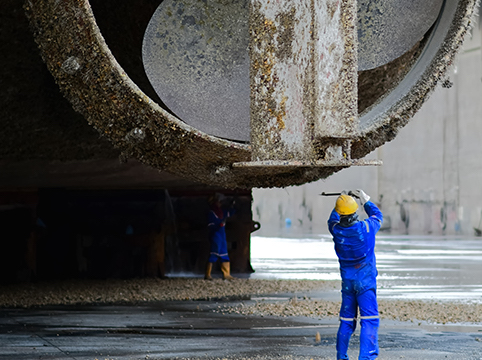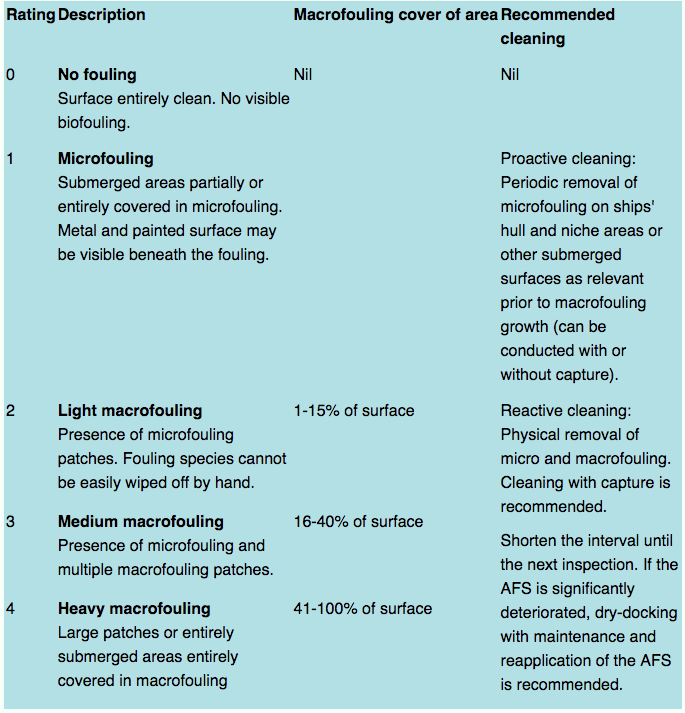(ARENDAL, Norway) — The revised International Maritime Organization (IMO) Biofouling Guidelines came into force in 2023 and provide updated guidance on how to prevent the spread of marine invasive species. Here are the key recommendations.
Marine invasive species infestations are a major threat to the world’s oceans and to the conservation of biodiversity. They can be triggered by marine hull biofouling, the accumulation of aquatic organisms on ships’ hulls, which are then transported around the world and inadvertently deposited in non-native waters. They can become invasive, outcompeting native species and multiplying into pest proportions.
Hull biofouling also has the effect of producing additional friction (hydrodynamic drag) on the vessel, which can increase fuel consumption by as much as 35 percent. In other words, good biofouling management can also be an effective tool to enhance energy efficiency and reduce air emissions from ships.
The new IMO guidelines
The 2023 guidelines are an update to and replacement of the 2011 guidelines. They are intended to provide a globally consistent approach to the management of biofouling, and include detail on ship design, selection of antifouling systems, hull cleaning and maintenance, among other issues.

Strict enforcement regimes are in place in nations like Australia with very sensitive marine ecosystems, and ships can be ejected from territorial waters as a result of biofouling. A recent example saw a cruise vessel evicted from New Zealand waters, and later denied entry to Australian ports, due to marine biofouling on its hull. It was forced to dwell offshore for several days while professional divers were dispatched to clean the hull. Passengers on board were later paid compensation and several port calls were missed.
Best practices to avoid biofouling as set out in the revised guidelines include:
• Choosing and installing a type-approved anti-fouling system (AFS).
• Implementing a ship-specific biofouling management plan (BFMP).
• Maintaining a biofouling record book.
• Conducting regular inspections and maintaining contingency action plans.
Shipowners should install an AFS in all submerged surfaces on a ship where biofouling may occur. Various AFS are designed for different ship operating profiles, some suitable for hulls and some for niche areas. Thus, shipowners, ship operators and shipbuilders should obtain appropriate technical advice when selecting a system. AFS manufacturers are best suited to provide advice to ensure a suitable system is applied, reapplied, installed or renewed.
Biofouling management plan
Every ship should have a ship-specific BFMP under the responsibility of owners, operators and masters. A BFMP may require information from naval architects, shipbuilders, shipowners and marine growth prevention system manufacturers and suppliers. The BFMP should include:
• The officer, or the position (e.g. chief engineer), responsible for implementing the BFMP.
• Details of the AFS installed and where it is installed.
• Details of the recommended operating conditions of the AFS to avoid deterioration, including parameters like temperature, salinity and ship speed.
• Regime for cleaning.
• Details of hull and niche areas where biofouling might accumulate.
• Schedule for fixed inspections.
• Regime for repairs, maintenance and renewal of AFS.
• Details of documentation and reports required to document biofouling activities.
Inspections
The guidelines provide scope for hull inspections on a schedule based on a ship-specific risk profile:
• For ships not undertaking performance monitoring (sensors and speed trials that actively assess changes in propulsion power and fuel consumption), the inspection should be carried out within 12 months of AFS application.
• Where performance monitoring indicates that the AFS is not performing effectively, an inspection should be carried out.
• Subsequent inspection should be carried out every 12 to 18 months (and possibly more often).
The guidelines provide a rating scale to assess the extent of fouling on inspection areas:

Performance monitoring of hull/fuel performance during ship operation should identify whether there may be an increased risk of biofouling accumulation. When monitoring identifies a possible increase in biofouling accumulation, the ship is at a higher risk level which should lead to contingency actions. A contingency action plan may include measures which are ship-specific and relevant for the monitoring parameters. In general, it will recommend proactive actions, corrective actions (such as maintenance or other repair plans) and inspections.
Biofouling record book
A biofouling record book should be retained on board for the life of the ship. It could be maintained physically or electronically, and should record details and reports of all inspection and maintenance activities to be undertaken for all hull and niche areas:
• Details of repair and maintenance of AFS (including date, location and areas affected).
• Details of repair and maintenance to the marine growth prevention system.
• Details of in-water or dry-dock inspections, including the inspection report.
• Details of in-water or dry-dock cleaning, including the cleaning report.
• Details of when the ship has been operating outside its normal operating profile.
• Copies of cleaning reports.
Importance of prevention
Although not all regional biofouling regulations are the same, compliance with the IMO guidelines will go a long way toward allowing access to ports with mandatory biofouling regulations. However, for vessels calling at ports in Australia, New Zealand, the state of California and other regions with unilateral biofouling regulations, its is also important to ensure that the crew is familiar with any particulars of the regulations in force, as these can include unique reporting requirements as well as specific thresholds for the permitted levels of biofouling.
The environmental importance of preventing the spread of marine invasive species cannot be understated. The health of the world’s coastal ecosystems requires shipowners to always be aware of any organisms “hitching a ride” on their vessels. And, as a bonus, a cleaner hull results in greater hydrodynamic performance, lower fuel consumption and reduction in carbon emissions.
